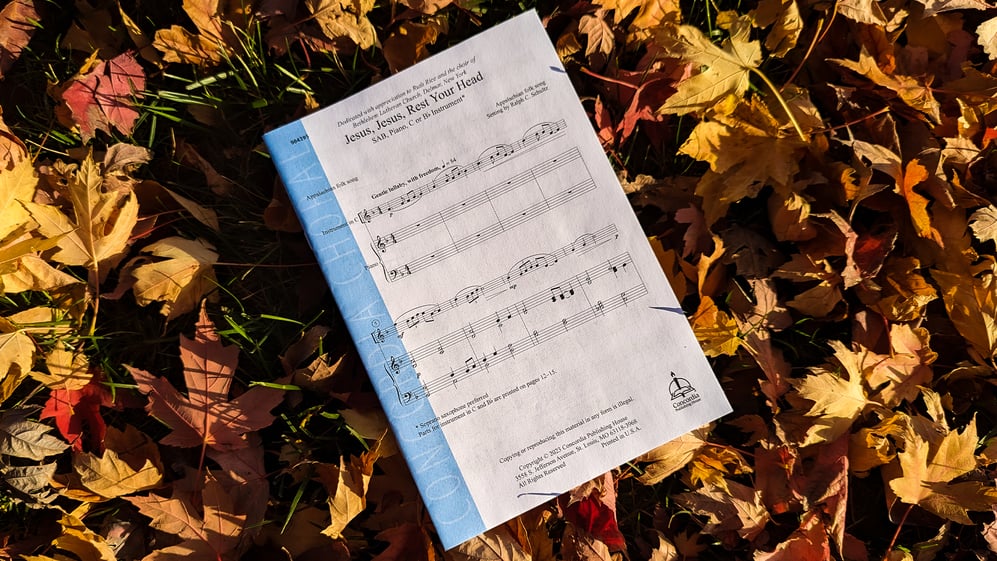Ralph C. Schultz offers us this Appalachian folk song that proclaims the birth of Jesus. The beauty of the song is placed in an accessible setting for SAB choir with a descant for C or B-flat instruments. The music supports the events leading back to the memorable refrain.
An Appalachian Christmas Lullaby
“Jesus, Jesus, Rest Your Head” is a charming Appalachian Christmas lullaby. As with many carols and songs that come from the sacred folk tradition, its exact authorship is unknown. The carol is also known as “The Manger Cradle Song.”
This carol features many of the hallmarks of American folk music. Many folk songs were first preserved through oral tradition before they were set to musical staves and published in hymnbooks. Folk songs usually contain a cultural component such as imagery that reflects the familiar customs and conventions of the people from whom the song sprung forth.
Although the birth of Christ took place in the Middle East in Bethlehem, the verse “Winds were blowing, / Cows were lowing, / Stars were glowing, glowing, glowing” conjures up feelings of a brisk wintry evening in Appalachia.
Distinctive Folk Song Features
Another distinctive feature of folk songs is that they are commemorative. They often romanticize a story that a culture cherishes. There is no story more cherished by Christians than the narrative of Christ’s life, and his lowly birth in a manger in Bethlehem is the opening scene from which the redemptive story unfolds.
The folk song is also communicative at its core. It begins with a tender supplication to the newborn King: “Jesus, Jesus, rest your head. / You have got a manger bed. / All the evil folk on earth / Sleep in feathers at their birth.” This supplication is the carol’s refrain, and it is the bedrock to which the lullaby returns again and again. It’s a reminder that even as an infant, Christ was cloaked in humility.
The first verse of the carol poses a series of rhetorical questions: “Have you heard about our Jesus? / Have you heard about his fate? / How his mother went to the stable, / On that Christmas Eve so late?” These questions are meditative; they invite the listener to ponder the core elements of the Christmas narrative.
The final verse especially illustrates the romanticization of the folk narrative: Epiphany and Christmas collide as “To the manger came the Wise Men, / Bringing gifts from hin and yon, / For the mother and the father / And the blessed little Son.” The pageantry of the full Christmas narrative takes center stage. The listener may temporarily set aside qualms about historical accuracy to bask in the wondrous chronicle of the Christ child.
Analyzing the Setting
Ralph Schultz’s SAB setting of this carol presents the lullabying melody in a modest yet gorgeous manner. The melody and instrumental part often move in stepwise motion, and the harmonies are integral but accessible for three- and four-part choirs.
Although a variety of instruments could take the instrumental line—flute, oboe, violin, viola, recorder—Schultz suggests the soprano saxophone as the preferred instrument. The saxophone’s tone and color surely complement this folk-style lullaby.
This setting is suitable for church choirs throughout the Christmas season; it would especially be appropriate for an evening service—perhaps a candlelight Christmas Eve service of lessons and carols, an Advent Evening Prayer service, or even a New Year’s Eve or Epiphany service.
Play Ralph Schultz’s setting of “Jesus, Jesus, Rest Your Head” at your church this Advent or Christmas.













.jpg?width=50&height=50&name=IMG_20220621_160541_456%20(1).jpg)
